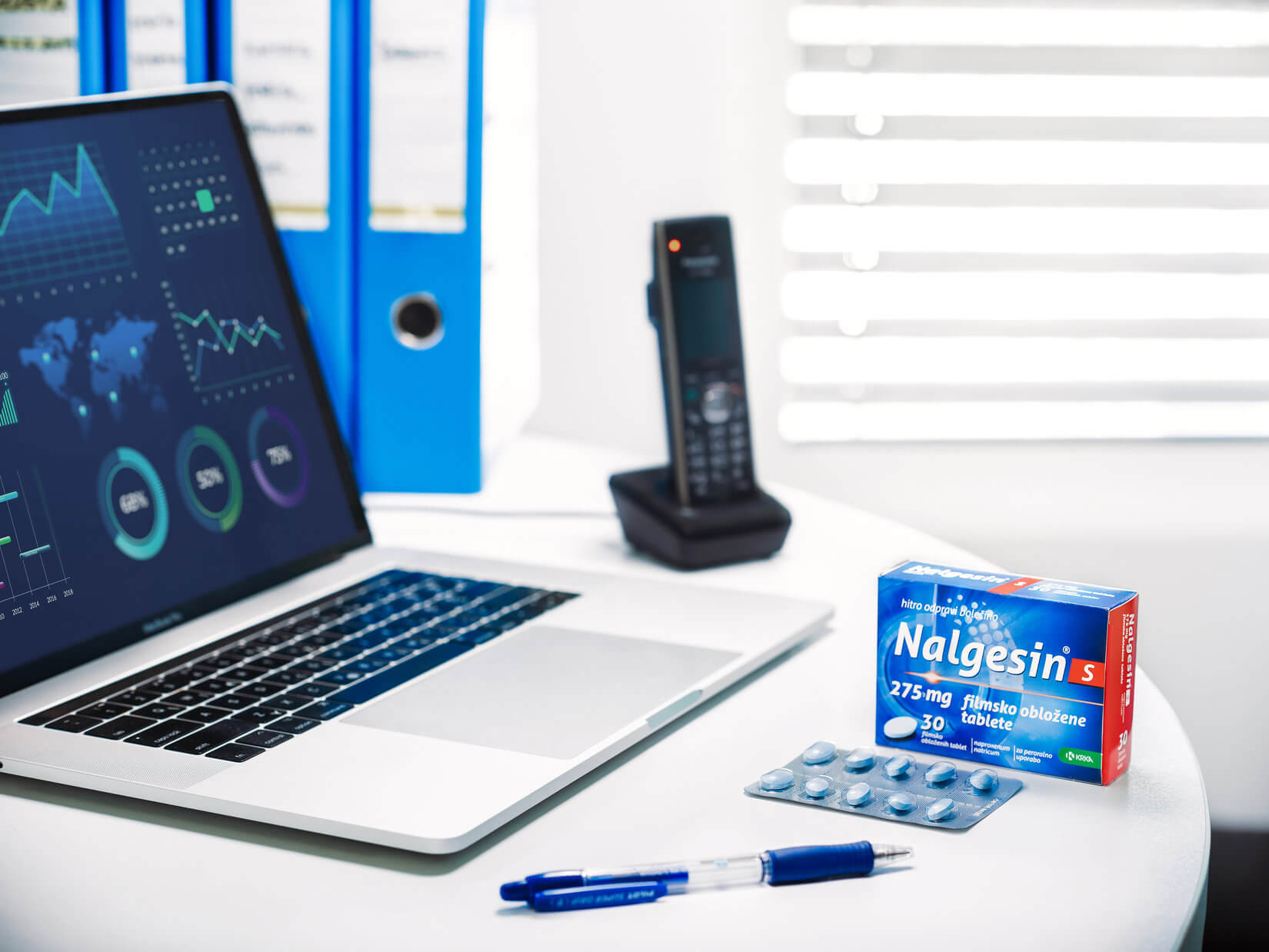
Research shows that only 20% of people take a painkiller as soon as they begin experiencing pain. As many as 80% wait for the pain to subside or they try to help themselves by going for a walk, getting some fresh air, etc. If relief is not provided in time, the level of pain can gradually increase, become stronger, and sometimes even unbearable.
Why do we wait too long and do not say no to pain in time
We are prepared to tolerate pain for a while, and that is why we usually wait too long before seeking relief. This is something we were taught when we were young. A teenager is experiencing strong menstrual pain and her mother says to her: “Grin and bear it, it will pass, go lie down for a while.” The same behavioural pattern will later be experienced in adulthood when she will be experiencing persistent work-related headaches. She won’t take a painkiller because she is willing to put up with the pain a little longer.
what happens if you don’t treat the pain?
HEADACHE
Tension headache, which feels like you have put on a hat that is too tight, may ruin your day. It can make you feel increasingly worse, and it can lower your concentration and efficiency at work and at home. Long-lasting headache can make you feel exhausted.
MENSTRUAL PAIN
The same applies to menstrual pain. When we experience pain, we are not as content as we were before, which affects our everyday mental and physical activities. It may also disturb our sleep, making us feel tired in the morning when we wake up.

BACK PAIN
Nearly everyone knows how it feels to have back pain. The important thing to realize is that most of the time it doesn’t point to any illness and doesn’t pose a health concern. In 90% of cases it goes away in a matter of 2-3 weeks. We can usually manage it ourselves without needing to see a doctor. Rest is not recommended. Try not to be still for more than a day or two, since it will not help ease the pain or help you get better quicker. You need to ease the pain to such an extent that daily activities become bearable, and then perform exercises that can speed up your recovery.
Can acute pain turn into chronic if left untreated?
When we experience acute pain, the body activates pain receptors and transmits the pain stimulus to the brain. If such a stimulus is short-term and not overly strong, it may wear off after its cause is identified and removed. Otherwise, such a stimulus may turn into chronic pain, which is actually a disease that affects the whole body and can even lead to depression. Chronic pain treatment should always be carried out under the supervision of a doctor, as it can be complicated and lengthy. It may also require interdisciplinary collaboration and include various treatment methods. Effective treatment of acute pain may prevent the onset of chronic pain.
It is vital to start treating pain IN TIME and to alleviate it while it is still in a manageable phase.
How to say no to pain
For mild, short-term pain such as headache, toothache, menstrual pain, muscle and joint pain, you can do a lot to help yourself. You can relieve mild, short-term pain yourself with painkillers available over-the-counter at a pharmacy. They differ in their content related to analgesic active ingredients. Nalgesin S* contains the active ingredient sodium naproxenate, which is known for:
- Quick pain relief
- Long-lasting action, even up to 12 hours, and
- Anti-inflammatory effect.
Studies show that naproxen is the safest painkiller from the non-steroidal anti-inflammatory drug group for cardiovascular patients.
When pain is more severe and persists for several weeks, and especially if it is accompanied by numbness in the groin or legs, instability, difficulty moving the legs or passing stool and water, a visit to the doctor is highly recommended.

Interesting facts about pain
- Approximately 8 out of 10 people have had back pain at least once in their lives.
- Knee pain is the most common reason why athletes need to see a doctor.
- Painful periods (dysmenorrhea), also known as menstrual cramps or menstrual pain, are the most common issue related to female reproductive organs, affecting up to 90% of women. Despite its high prevalence, most women do not seek medical attention.
- Migraines are common in Slovenia, affecting 1 out of 4 women, and 1 out of 12 men. They usually occur between 25-40 years.
*Krka has registered a wide range of products in different countries. There are differences in registration and availability of our products among the countries.
Some products may also have a different brand name in different countries. Please contact your local representative office for up-to-date details specific for your country or visit the available Krka’s local web pages.
Reference
- IPSOS, Poročilo kvantitativne raziskave Nalgesin, Slovenija, Slovaška 2016. Knjižica Reci ne bolečini. Krka, d. d., Novo mesto, Šmarješka cesta 6, 8501 Novo mesto
- Krčevski-Skvarč N. Kronična bolečina – bolezen, Zbornik predavanj FAJDIGOVI dnevi 7; 2005
- Lefebvre G. Primary dysmenorrhea consensus guideline. J Obstet Gynaecol Can. 2005 Dec;27(12):1117-46
- www.glavobol.com
- www.nalgesin.si
